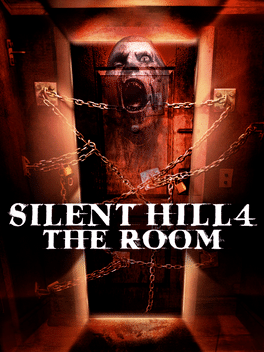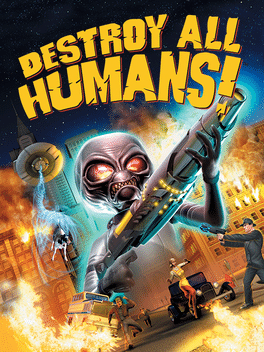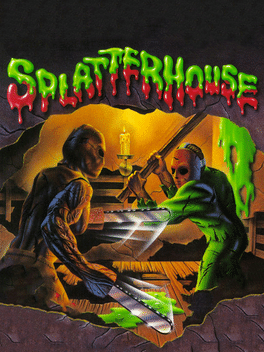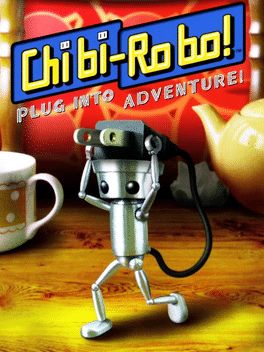(Originally published to Glitchwave on 10/19/2022)
[Image from igdb.com]
Silent Hill 4: The Room
Developer: Konami/Team Silent
Publisher: Konami
Genre(s): Survival Horror
Platforms: PS2, Xbox, PC
Release Date: June 17, 2004
Shockingly, the most substantial deviation that Silent Hill 4 makes is almost omitting the town of Silent Hill entirely. Usually, I’d be thrilled to see a series retreat from its familiar stomping grounds, but Silent Hill is an entirely different beast compared to The Mushroom Kingdom and Hyrule. Besides being the series namesake, Silent Hill is the main character of the series and the only recurring one as well. Silent Hill 2 established the town as the recurrent protagonist, highlighting its supernatural powers as a haven for a limitless amount of harrowing possibilities. Silent Hill 3 seemingly averted from the town at first, but Heather eventually returned to the zenith point of its horrific emissions after taking a diminished helping of it with her through the streets of Portland, Maine. Both sequels take radically different directions, but the town still demands its place as the center of attention. Silent Hill 4’s inclusion of the town is fairly minimal, resorting to lore buildings to retain some sense of interconnectivity. Wiping the slate clean and only referencing the town of Silent Hill in a mainline Silent Hill game may seem blasphemous, but I’ll allow it. Conventions shouldn’t bog down an atypical series like Silent Hill. Two different Silent Hill protagonists have trekked through the same hospital on two separate occasions, so perhaps it’s time to tread new ground before the developers are forced to expand the area of Silent Hill to the mammoth proportions of a major metropolis like London or Tokyo. Doing so would compromise the quaint, remote scope of the town.
Instead, Silent Hill 4’s primary setting is Ashfield, a town as uninteresting as its generic, every-American town name would imply. The town is cloudy and dismal, but only on the scale of real-life cities like Seattle or Cleveland instead of acting as the murky base of a haunting, hellish atmosphere that Silent Hill exudes. At least, I can deduce this from the small fraction I can see of it. Ashfield is not a fractured concrete field for the player to navigate like the Silent Hill hub from the previous games. Rather, it’s merely the zip code of the protagonist's apartment. Henry Townshend, this game’s
Of course, executing something of a “bottle movie” in a video game would be downright boring, so Silent Hill 4 finds a way to give the player more legroom without sacrificing the intended feeling of claustrophobia. Henry’s only mobile outlet outside the confines of his roomy prison is a hole in his bathroom with a diameter wide enough to burrow through, a sure-fire sign that Henry will not be will not be getting his security deposit back. It's like in Being John Malkovich. Instead of co-piloting the consciousness of an A-list Hollywood actor at the end of the tunnel, Henry finds himself in the pits of Silent Hill, or at least that’s what the player assumes. In each setting Henry arrives at after journeying through the hole’s tight crevices, there is only one other person around who isn’t an enemy. They’ll either follow Henry like a dog looking for an exit or pop up occasionally when least expected. However, none of these people survive as they are brutally murdered with methods so eclectic that Dr. Phibes would be impressed. Their deaths signal the end of the levels as Henry wakes up in a confused stupor thinking that it was all a dream. Suspiciously, the people that die in Henry’s “dreams” die in real life with serial numbers etched into their bodies to lead the Ashfield police department into a murder conspiratorial goose chase. While the cops try their best to wrap their heads around who could’ve committed these murders, only Henry can apprehend the Freddy Krueger figure.
A series like Silent Hill should subvert people’s expectations. Still, the unorthodox premise and setting of Silent Hill 4 seem incongruous enough to make even the most open-minded of Silent Hill fans apprehensive. Fortunately, Team Silent sprinkles in traces of familiarity to keep the fans from writing it out of the series canon. For one, Henry is such a fitting protagonist for the series, for better or worse. His total aloofness and scrawny, everyman disposition exemplify the archetypal protagonist of the series so well that it verges on parody. Heather’s emotive capacity resembling normal human reactions was too lifelike for Team Silent, so they regressed by making the next game’s protagonist a bachelor-era version of her dad. Like Harry before, Harry seems only slightly puzzled by what is happening around him. Being ensnared in his apartment and its harrowing implications, plus the expanding hole in his bathroom where audible weeping is often heard, only makes Henry tilt his head in confusion like a German Shepherd. Many argue that he lacks personable charisma and is the most useless protagonist across the four Team Silent-developed games, and they’d be correct. However, after four games, one can’t deny that Henry epitomizes the schmuck-like essence we’ve come to associate the protagonists of the series with to a capital T.
Silent Hill 4 connects itself with the previous games in the franchise mostly through lore. Walter Sullivan is a notorious serial killer whose brief mention in a Silent Hill 2 journal can be missed in a blink of an eye. In Silent Hill 4, Walter’s role has been elevated to the responsibility of connecting the game with its predecessors. The readable passage found in the journal states that Walter committed suicide in his prison cell by crudely stabbing himself in the neck with a spoon. Because of this, the Ashfield police force is grievously concerned that Walter’s death has been prematurely declared, and he’s on the loose again. Either that or a copycat killer has taken his place and is finishing what he started. One might think the Ashfield police are paranoid, but there is a clear indication that their deduction might not be that farfetched. A message inside Henry’s front apartment door says, “don’t go out,” signed by Walter in blood. The supernatural mystery element hasn’t been present in Silent Hill since the second game and is an aspect of Silent Hill 4 that elevates its intrigue.
A doofus protagonist and placing an obscure lore character in the limelight is essentially the extent of Silent Hill 4’s connectedness to the rest of the series. Everything else in Silent Hill 4 that is reminiscent of Silent Hill’s properties and foundation feels off-puttingly askew. In his apartment, Henry might gingerly traipse around in the first-person perspective. Once he crawls through the hole, the places in which he finds himself reorient everything back to the third-person perspective along with the rigid controls the series is known for. Silent Hill 4’s “dream” areas outside of Henry’s apartment would be the equivalent of the “dungeons” seen in the other games: buildings and other similar establishments with multiple floors that offer a course of consecutive objectives that will eventually lead to an end goal, inspired by Resident Evil and also The Legend of Zelda to a lesser extent. I’d be hard-pressed to refer to these areas in the same breath as the “dungeons” from the previous games because their designs resemble nothing of the richly layered dungeon areas we’ve been familiarized with. Silent Hill 4’s areas are as if the developers took the areas of the previous three games and put them in a microwave, warping their foundation and thus compromising their stark structure. Many of these levels are more free-flowing, with the vast majority of doors and passageways open to the player instead of most of them being permanently blocked off. In the previous games, the few accessible portions of the dungeons signal the player to keep note of its contents. When the player can enter and exit most rooms willy-nilly, it’s anyone’s guess where the key items could be and what to do with them. I particularly dislike the sections where Henry has to return to his apartment and perform a task to progress in a level because it’s incredibly unclear. It breaks the rationale of the dream-reality dichotomy the levels and the apartment should have. Can Henry seriously believe these are dreams when he can consciously return to them with something he retrieved from the real world or is he that fucking dense? The developers attempted to capture that abstract Silent Hill progression with new features and practices, but it’s far too unhinged in execution. At the same time, the decreased amount of layers to these levels dilutes the Silent Hill design too drastically. That, and the sequential order of levels with titles like “Subway World, Forest World, Water Prison World, etc.” makes them feel jarringly “video-gamey,” like children pretend-playing “Super Mario” around their hometown.
The atmosphere is a crucial element of any exemplary Silent Hill title. An authentic one should carry an aura of dread, despair, and a level of varying tension around every corner. Silent Hill 4 establishes a sense of unease with the apartment premise, and the dingy levels are certainly Silent Hill-esque. However, Silent Hill 4 does not deliver the same caliber of dirge and grotesquery compared to the previous games. I’d comment that the “otherworld” is another Silent Hill staple that has also been redacted, but I suppose the levels on the other side of the hole act as an alternate dimension in principle. Bloody viscera no longer drapes over the fleshy walls, and the architecture isn’t supported by sterile, jet-black industrial steel. Each level in Silent Hill 4 merely persists at a standard base of intensity that one would expect to become progressively more surreal and horrific, judging from the examples set by the previous games. The game has its standout moments, like the giant head found in the hospital, but it does not compare to the freakishly twisted “otherworld” that we are accustomed to. Silent Hill 4 even omits the flashlight because every level is accommodatingly lit. Considering this is a game from the same series that made people start drinking espresso at night because they were too scared to fall asleep, the visuals are kind of lame.
The developers still try to remind the player that while Silent Hill 4 makes plenty of offbeat decisions, it is still a bonafide survival horror experience. To emphasize this notion, Silent Hill 4 borrows the limited inventory space similar to that seen in the early Resident Evil titles. While limiting the player’s inventory space is intended to make the game feel tenser, I’ve stated before that this practice is only irritating and tedious whenever a game does this. Silent Hill 4 is no different. Items are placed more generously compared to the scarce encounter rate of Silent Hill 3. Still, the limited inventory system often makes finding items inconvenient. Every item, from the healing items, key items, weapons, ammunition, etc., takes up an individual spot in an inventory that totals 8-10 individual items without ever expanding. Not even the primitive system from the first Resident Evil game made the player hold each magazine of bullets in multiples of ten, so Silent Hill 4’s incorporation of it is more of a regression than a homage. The rationale of the limited inventory system on the part of the developers is most likely that Henry can easily return to his apartment by reentering the smattering of holes located around each level and reorganizing his arsenal via the chest storage unit. Due to the plentiful amount of items and keys strewn across each level, they will be forced to retreat into the whole for an inventory dump a nauseating amount of times, compromising the rift of surrealness between the levels and the apartment even further.
Fortunately, Henry will never need too many items on hand most of the time because the game is by far the easiest of the Silent Hill games developed by Team Silent. The game might be a bit roundabout and nebulous, but the player won’t have much to worry about while scrambling through the levels. The new health system is one main aspect Silent Hill 4 adjusts might attribute to its greater sense of ease. As I’m sure any Silent Hill fan would recall, the previous games displayed the protagonist’s health in the pause menu with colors that signified the approximate level of health the player had, ranging from a healthy green/blue to a ruinous red. Henry’s health is instead exhibited across the top left corner of the screen with a lengthy health bar with the same color pallets. Henry also must have been a varsity athlete in his youth (or he’s too dumb to properly register pain) because he’s the most resilient of the Silent Hill protagonists when it comes to taking damage. Any gnawing at his legs from the Sniffer canines or a mighty bitch slap from the abominable Repulsion-like Wall Men or the cloaked Twin Victims only reduces a sliver of Henry’s health. Henry hardly has to use either of his two firearms because the array of melee weapons will beat most enemies into submission with little difficulty, and he can charge up a swing with any of these weapons for a one-hit KO. It’s refreshing after dealing with the enemies in Silent Hill 3, who were as durable as demonic cockroaches. If all of the middling damage Henry endures starts to accumulate and turns his health bar less-than-blue, don’t bother freeing up an inventory slot by consuming a health drink (sorry, “nutrition drink.” Is Ashfield Silent Hill’s Shelbyville or something?) Simply backtracking a few yards down and returning to Henry’s apartment via one of the holes will restore all of Henry’s health, for the comfort of reality has healing powers, apparently. The red notebook on the side table in Henry’s living room is also the game’s only save point, but it can be accessed in any revisit from the hole. Everything feels too facile, but don’t get too suckered in as I did.
My declaration that Silent Hill 4 was the easiest Silent Hill title was intentionally misleading. While everything I listed above is true, it was merely a ruse to lull me into keeping my guard down. I’ve never been duped so drastically by a game’s difficulty curve before playing Silent Hill 4, for the second half of this game is the rudest of all rude awakenings I’ve experienced in any video game. As the game progresses, the killings in the murderer’s itinerary get literally too close to home for Henry. A man named Richard from the apartment complex is electrocuted. Shortly after that, the murderer pursues Eileen Galvin, the woman who lives next door, who Henry peeps on from time to time. However, the murderer does a shoddy job with Eileen and merely maims her. Eileen is taken to an obligatory hospital level to treat her grievous wounds, and Henry comes to rescue her and take her to a safe place. If the implications of the last sentence weren’t clear enough, let me spell it out more bluntly: the ENTIRE second half of Silent Hill 4 is an escort mission. Once I realized this, my heart sank into my stomach, and I felt like I was going to be violently ill.
An escort mission that spans an entire half of a game sounds painful enough, but there are so many other factors stacked onto an already terrible idea that make the second half of Silent Hill 4 borderline insufferable. As one could imagine, the inherent vexations of an escort mission are having to support someone who is more vulnerable and does not hold their weight in defense or offense. I suppose there have been worse escorts in gaming than Eileen because at least she can aid in combat with her character-specific weapons. Alas, everything else about her presence feels like Henry has an anchor chained to his ankle. Eileen is fairly weak due to being wounded and cannot run as quickly as Henry. She cannot climb up ladders because of her affliction, forcing the player to take more circuitous routes to accommodate her. She’ll nag at Henry to slow down constantly, but the last time I checked, her leg wasn’t the broken body part. Perhaps the fucking high-heeled shoes she insists on wearing make her handicapped, but I digress. Because Henry will constantly move at a more leisurely pace to oblige Eileen, the game becomes far tenser. The ghosts, the stand-out invincible game's enemies that can only be deterred and not fully vanquished, can no longer be evaded with ease as Eileen dragging her feet behind Henry gives them ample opportunity to kill Henry. In passages with any number of ghosts in the second half, the player will be screaming the title of a Dexy’s Midnight Runners song at the game until their voice is hoarse. Curiously enough, Eileen doesn’t possess an individual health bar. Instead, she had an “insanity meter” that the player cannot interpret. If Eileen is damaged significantly or left alone for too long, she’ll become “cursed, " making her look as bloodied as Carrie White. When she is cursed, she’ll start to damage Henry. After all the criticism RE4 gets for Ashley Graham, it’s a wonder why the same isn’t the case for Eileen in Silent Hill 4. Leon is simply doing his job, but who knows what motivates Henry to endure this grueling escapade. Spoiler alert, Henry: she's not going to fuck you.
To make matters worse, Henry’s apartment no longer heals him after returning from the hole, so stock up on healing items like you’re preparing for a nuclear holocaust. Signaling the second half of the game withdraws the apartment’s healing powers as the entire place is penetrated by vengeful spirits that put the entire place under a curse. Appliances will start acting erratically, like the cabin from Evil Dead II, and getting close will damage Henry more than any enemy could. The only way to combat these curses is by using the holy candle or a saint medallion found in the levels. Even after alleviating these curses, they will still appear periodically, so the curse will never be attenuated entirely. While this process is a chore, it is the most unnerving aspect of the game. All that molly-coddling the room did with healing Henry’s boo-boos was meant to illustrate the comfort people feel in their homes. If invaders defile that sense of security, it’s one of the most distressing terrors someone can experience. Suddenly, the spot that once served as a place of respite is comparatively more hostile than the levels through the hole, and the player feels as if nowhere is safe.
Besides being yet another second-half encumbrance, this marks a pivotal point in the narrative. Silent Hill 4’s The mystery of Henry’s detainment in his apartment and its connection with the game’s antagonist is revealed in disturbing detail. Walter, or his spirit, is indeed the culprit behind the new crop of murders and is finishing the job he started long ago. His methodology for his killings exposes much about his tragic, sordid past. Walter was abandoned by his mother and left to live in an orphanage in Silent Hill, the prison-like “Water Prison” level. Like most prisoners, Walter finds comfort in religion, but no one should seek out the kind of religion Silent Hill is serving. The cult’s teachings lead Walter to the “21 Sacraments,” a cleansing ritual involving the murders of 21 people. In doing this, Walter believes that he will be reunited with Henry’s apartment, who he believes is his birth mother (yeah, it’s weird). Upon returning to Henry’s apartment with Eileen, the game's final level is their apartment complex. It is now a visual representation of how Walter perceives the place as his birth spot, with placenta ooze covering the walls and the sounds of a woman in labor. It’s unsettling, to say the least. Henry is the last intended victim of the murders, so Walter has been preserving him in his apartment like a farmer who keeps livestock before the slaughter. Henry stops Walter as the game’s final (and only) boss, and the few good endings entail a happy ending for Eileen and Harry. However, it’s the worst ending that ironically is the most impactful. Despite defeating him, Walter still succeeds in infiltrating Henry’s apartment if Henry neglects both Eileen and the apartment. The child version of Walter that pops up occasionally lies comfortably on the couch, happy that he has finally reunited with his mom. I think this ending is the more satisfying because it focuses on the most interesting character of the game. We don’t start to condone Walter’s actions, but uncovering his past through the plot and the readable notes definitely makes him a sympathetic villain. His motives are also interesting and connect to the game’s central theme of security, which are intertwined with some compelling Freudian themes we haven’t touched on since Silent Hill 2.
Silent Hill 4: The Room is fucking bizarre, and I can’t make heads or tails of it. The game is an acquired taste for those who seek out the esoteric, and I thought I was one of those people when the retreaded ground of Silent Hill 3 left me slightly unsatiated. After playing it, I am left more bewildered than satisfied. I appreciate Team Silent’s pension for subversion and their attempt to reinvigorate the franchise with creative ideas, but it all falls apart in execution. Silent Hill 4’s gameplay is one big contradiction. Some aspects are far too leisurely while others like the prolonged escort mission are the most punishing the series has ever been. All the while, the level design feels both simplified and knotty. The narrative also doesn’t save the gameplay because the story is just as tangled. My summation of the story only focused on the positives because if I included all of the confusing plot holes that don’t make a lick of sense, this review would be twice its length. It’s all a giant mess. One could argue that I wouldn’t be as critical if the game were a new IP, but this game still feels like a Silent Hill experience. It’s just the first entry in the series that missed its mark with everything except for creative ingenuity. I’ve always argued vociferously that video games should be treated as art, but should the artistic elements of a video game excuse the tawdry gameplay and narrative aspects? Using Silent Hill 4 as an example, I’m not sure I have an answer to that question.





